A Brief History
Hatshepsut Temple was built during the reign of Hatshepsut, the fifth pharaoh of the Eighteenth Dynasty of Egypt. Construction began around 1479 BC and took over 20 years to complete under the leadership of Senenmut, Hatshepsut’s royal steward. The temple complex is located near Deir El Bahari on the west bank of the Nile river in Luxor, Egypt.
- Place: Hatshepsut Temple
- Country: Egypt
- Governorate: Luxor Governorate, Egypt
- Age: Over 3,000 years old
- Population: Historical site, uninhabited
- Discovered by: Expedition led by Karl Richard Lepsius in 1844
- Famous for: Its unique architecture, blending traditional Egyptian & classical Greek styles.
- Nearby locations: Deir El Bahari, Valley of the Kings, Karnak Temple
Unique Design and Architecture
The temple has a unique three-terrace design that blends styles from ancient Egyptian architectural traditions with themes that project the kingship of Hatshepsut. It’s built into the cliffs and optimized to make use of the landscape. Three large terraces are reached by ramps that lead up to the next level. On the terraces are colonnades and shrines decorated with scenes and reliefs showing Hatshepsut’s divine legitimization. Pillars in the second terrace depict Hatshepsut as a male king.
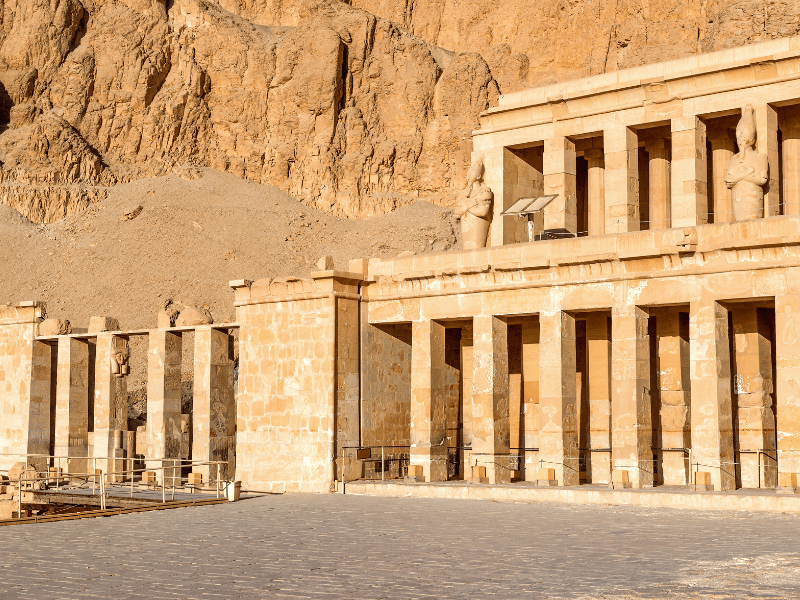
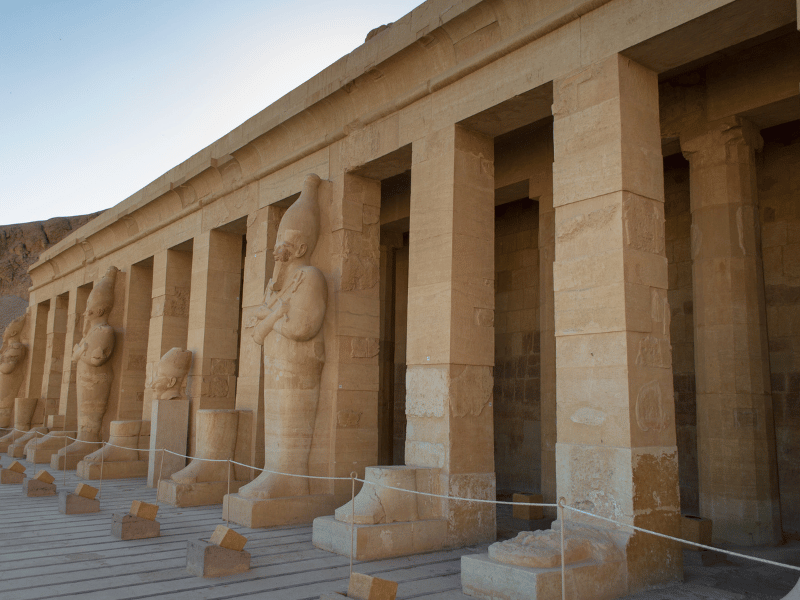
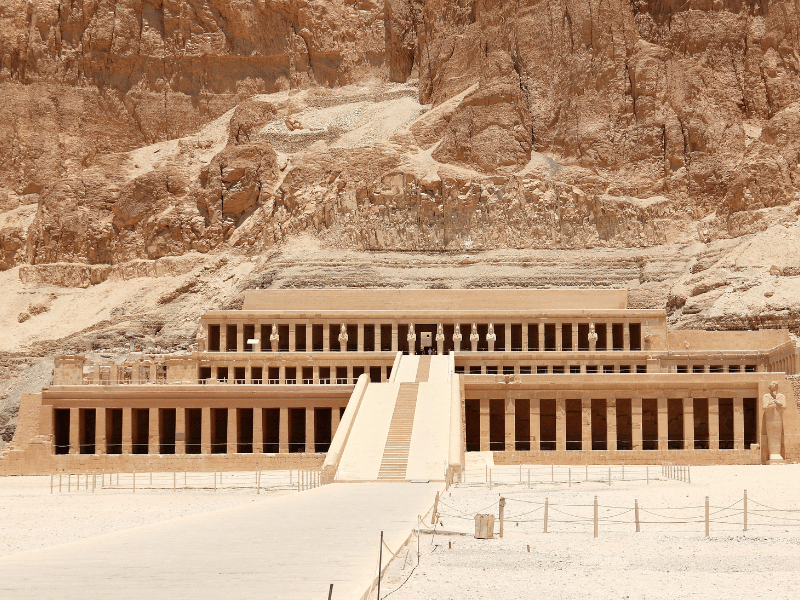
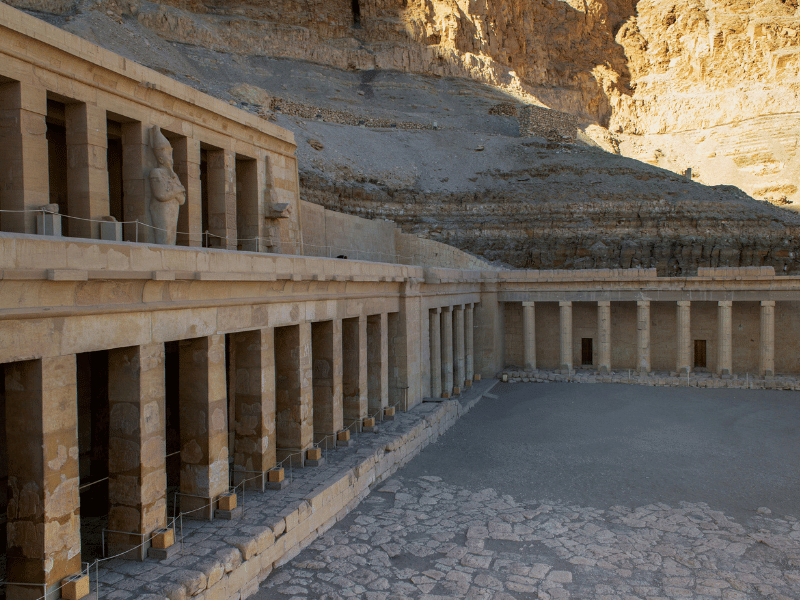
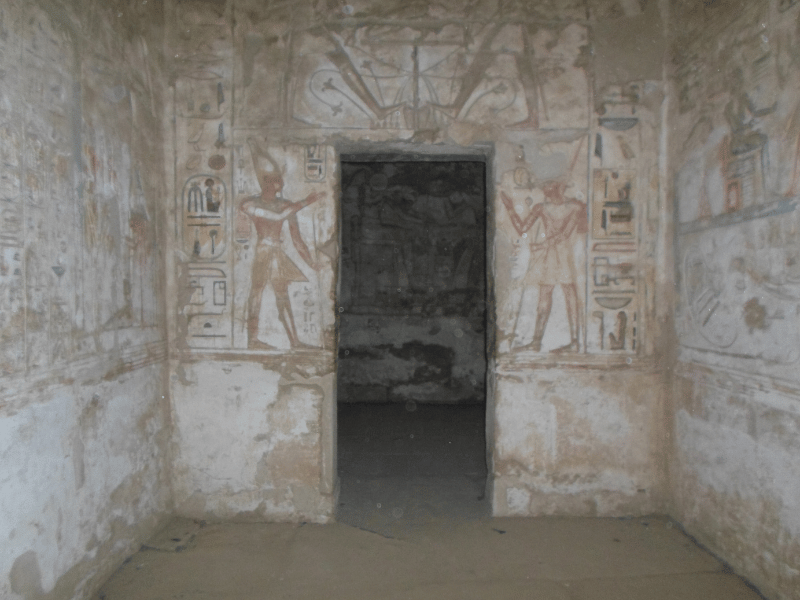
Well-Preserved Wall Reliefs and Scenes
What makes Hatshepsut Temple so fascinating is the extensive wall reliefs and scenes that have amazingly survived the centuries. On the first terrace walls, there are detailed scenes showing Hatshepsut’s divine birth and the expedition she sent to the mysterious land of Punt for treasures like gold, incense trees, and exotic animals. On other walls, she is portrayed as both a queen and a king engaging in ritual acts. The scenes provide invaluable insights into her powerful reign and mythology surrounding ancient Egyptian kings.
Decline and Rediscovery
For reasons still unknown, shortly after Hatshepsut’s death, her monuments were systematically defaced and damaged by later builders. Her images and name were chiseled off temple walls. The exact causes remain unclear but it was likely due to a effort to eliminate her from history since a female ruler went against Egyptian tradition. The temple sat buried and unseen by visitors for centuries until rediscovered in 1844. Since then it has been extensively restored and is today a UNESCO World Heritage Site.
Magnificent Colonnades and Upper Terraces
Ascending ramps lead up to the second terrace where two parallel rows of trees with palm-like leaves and Hathor head capitals on the columns create a breathtaking hypostyle hall effect. On the back wall, large scenes show Hatshepsut introducing her successor and nephew Thutmose III. The ramp further climbs up to the third and highest terrace where a small shrine once stood. From here, the Nile valley and Karnak temple can be seen in the distance, demonstrating how the temple designers maximized views of the Nile landscapes below.
Ongoing Conservation and Restoration Efforts
While most wall reliefs and artistic elements have been restored over the last century, conservation work at Hatshepsut Temple continues. The limestone used in construction weathers easily when exposed to elements. Fungi, plants and dust also take their toll over time on unprotected surfaces. Egyptian archeologists and historians are cooperating with international organizations on preservation projects focused on stabilizing cliff floors, protecting rock-cut walls and repairing collapsed sections. When properly maintained, this incredibly well-preserved temple complex will remain standing for many more generations to appreciate Hatshepsut’s magnificent architectural legacy.
Must-Visit Tourist Destination
Hatshepsut Temple’s incredible preservation, impressive architecture and wealth of historical information carved on its walls have made it the most-visited site in Luxor after the Karnak Temple. Groups of national and international tourists can be seen every day admiring its finely detailed reliefs and soaring columns. Licensed guide services are available for an educational experience exploring its history and significance within Egyptology. With major restoration ensuring it stands the test of time, Hatshepsut Temple will continue attracting visitors interested in unraveling ancient Egyptian civilization for many more years to come.



